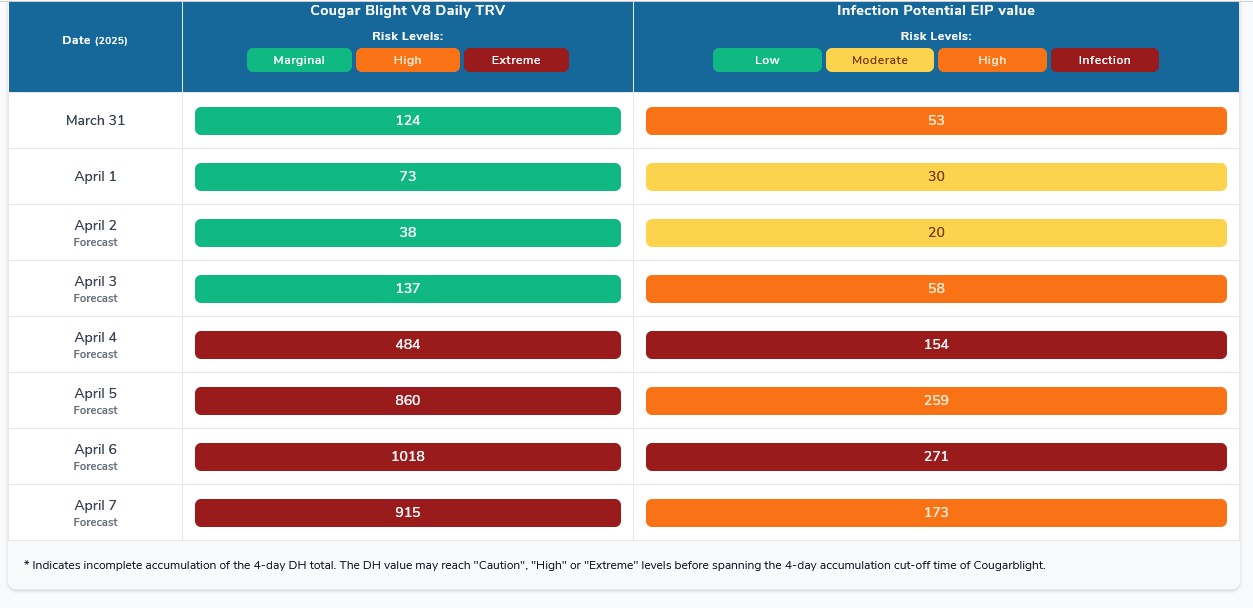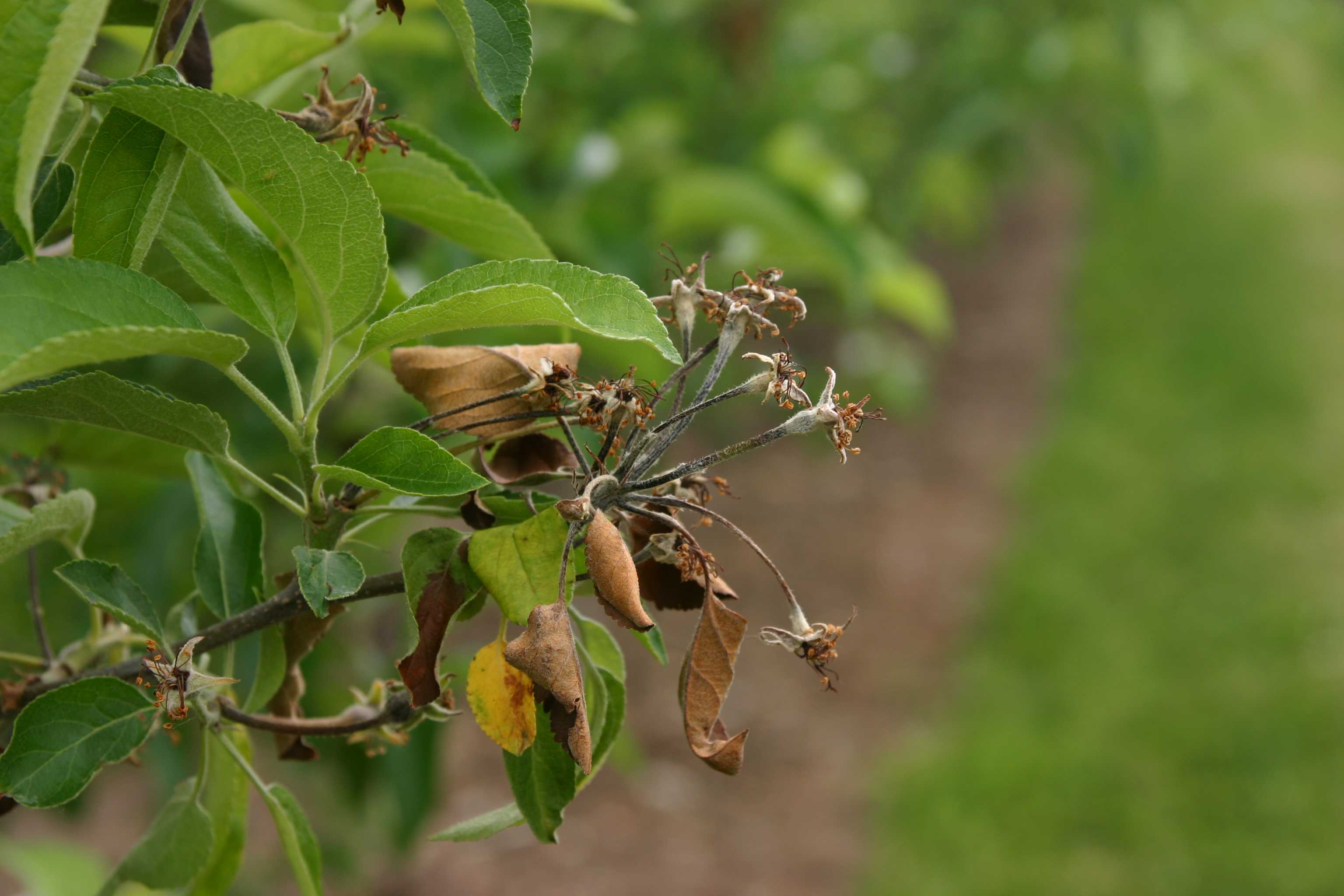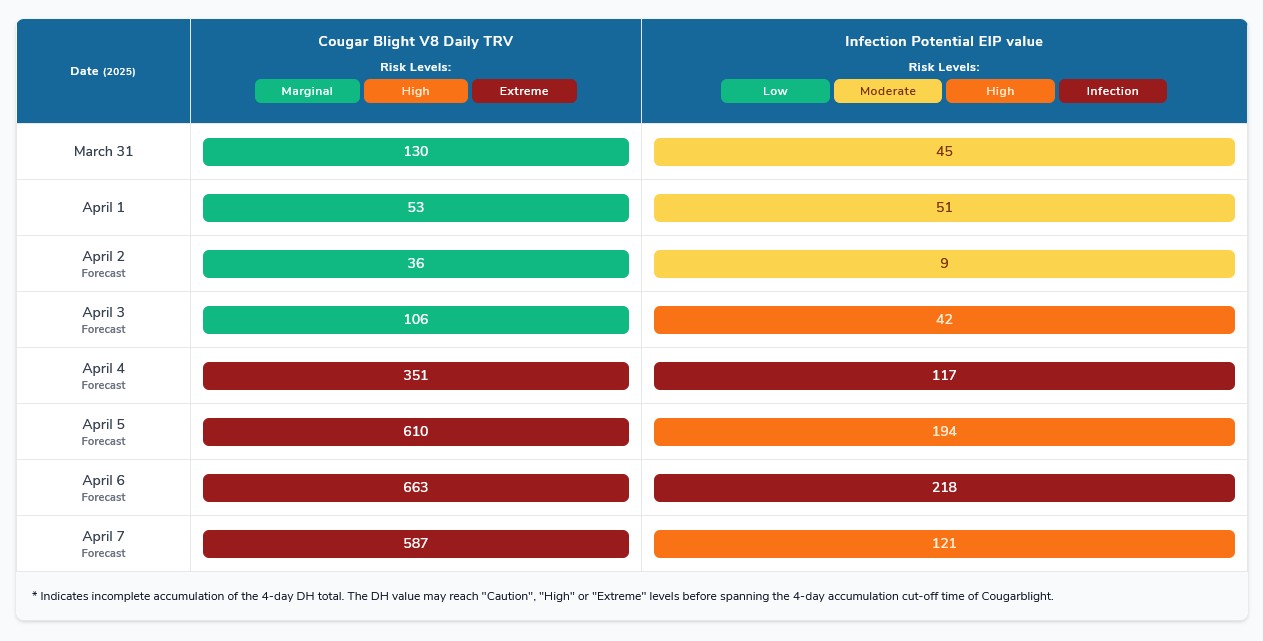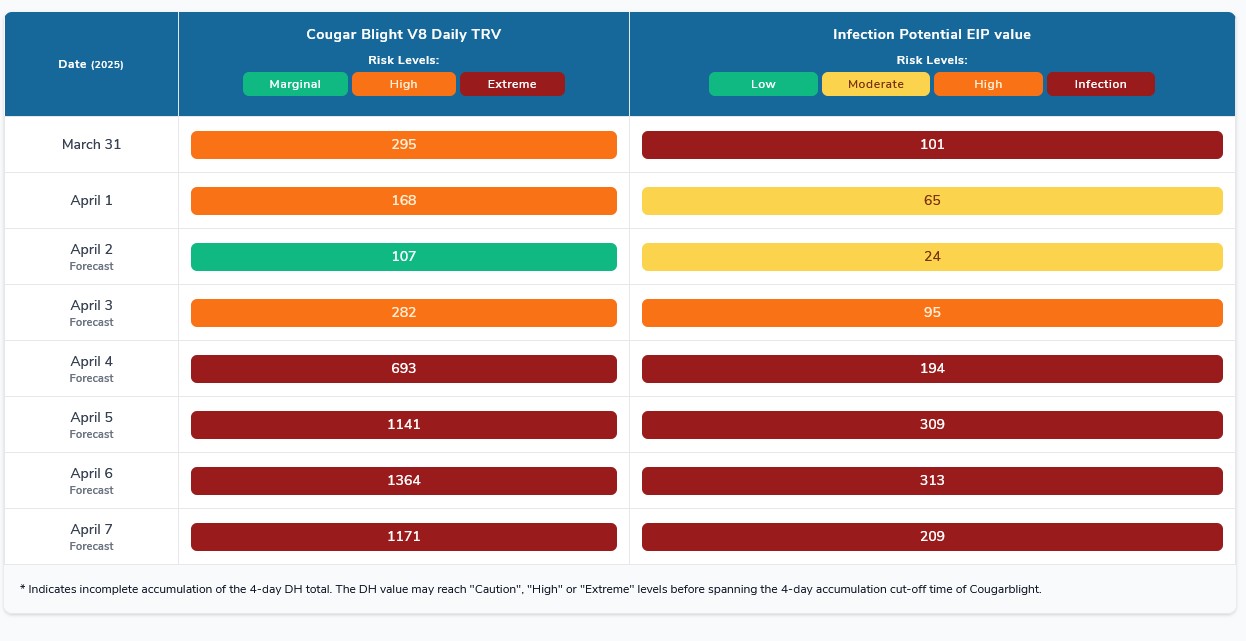April 3-7: Blossom Blight Infection Alert!
go.ncsu.edu/readext?1065580
en Español / em Português
El inglés es el idioma de control de esta página. En la medida en que haya algún conflicto entre la traducción al inglés y la traducción, el inglés prevalece.
Al hacer clic en el enlace de traducción se activa un servicio de traducción gratuito para convertir la página al español. Al igual que con cualquier traducción por Internet, la conversión no es sensible al contexto y puede que no traduzca el texto en su significado original. NC State Extension no garantiza la exactitud del texto traducido. Por favor, tenga en cuenta que algunas aplicaciones y/o servicios pueden no funcionar como se espera cuando se traducen.
Português
Inglês é o idioma de controle desta página. Na medida que haja algum conflito entre o texto original em Inglês e a tradução, o Inglês prevalece.
Ao clicar no link de tradução, um serviço gratuito de tradução será ativado para converter a página para o Português. Como em qualquer tradução pela internet, a conversão não é sensivel ao contexto e pode não ocorrer a tradução para o significado orginal. O serviço de Extensão da Carolina do Norte (NC State Extension) não garante a exatidão do texto traduzido. Por favor, observe que algumas funções ou serviços podem não funcionar como esperado após a tradução.
English
English is the controlling language of this page. To the extent there is any conflict between the English text and the translation, English controls.
Clicking on the translation link activates a free translation service to convert the page to Spanish. As with any Internet translation, the conversion is not context-sensitive and may not translate the text to its original meaning. NC State Extension does not guarantee the accuracy of the translated text. Please note that some applications and/or services may not function as expected when translated.
Collapse ▲Please note that all predicted blossom blight infection events are current as of April 2, 2025 @ 8:45 p.m. Environmental conditions may change and may impact fire blight risk.
Henderson County, NC
The EIP model on NEWA is calling for a high risk for blossom blight infection on 4/3, an infection event on 4/4, a high risk for infection on 4/5, an infection event on 4/6, and a high risk for infection on 4/7. On Saturday April 5, the only condition not present according to the model is a wetting event. Dew, a pesticide spray, or even a mist could cause an infection. If strep was sprayed on April 1 or earlier the predicted infection events do not change and I would encourage you to prepare to apply strep. The table below shows the predicted infection events if no streptomycin is sprayed. I’ve been playing with some strep application timing scenarios in NEWA to best advice you. First, I indicated in NEWA that strep was sprayed on 4/3. If you spray on April 3rd, you could go back in on Saturday (4/5) to cover the infection event predicted on Sunday and the high risk present on Saturday. This is the safest option IMHO and would cover you through at least Monday. If you are going this route, I’d suggest the 8 oz/100 gal Harbour rate (2.67 oz/100 gal FireWall 50) on April 3rd and then double that rate for the Saturday (4/5) spray. If you just can’t swing it, a single application (the higher rate) on Saturday may do the trick, but it is risky. Another option would be to spray strep (lower rate) on Friday, which would cover you for the predicted infections on Friday and Saturday and then go in Monday with the higher rate and try to clean up the infection event on Sunday. In general, I don’t love promoting “kick-back” applications as these types of sprays are believed to increase the rate of resistance selection.
Polk County, NC
The EIP model on NEWA is calling for a high risk for blossom blight infection on 4/3, and infection events on 4/4, 4/5, 4/6, and 4/7. On Thursday April 3, the only condition not present for an infection event is that the EIP did not reach “100” (note-it’s “95” so pretty darn close and I’d still be concerned). If strep was sprayed on April 1 or earlier the predicted infection events do not change and I would encourage you to prepare to apply strep. The table below shows the predicted infection events if no streptomycin is sprayed. I’ve been playing with some strep application timing scenarios in NEWA to best advice you and frankly this is pretty tricky. Even if apply strep on April 3rd, an infection event is still predicted for the next day! I think you’re best bet is to apply streptomycin (8 oz/100 gal Harbour or 2.67 oz/100 gal FireWall 50 on April 3rd which will cover you for the high risk and knock down the bacterial populations some to help with the infection even on Friday. Then go back in Saturday with a high rate of strep to help cover the infection from Friday. Spraying strep on Saturday will drop you to “high risk” for infection on Sunday and Monday. I’d be comfortable with 72 hours of protection if no more flowers are opening so you should be ok through Monday unless conditions change.
Wilkes County, NC
The EIP model on NEWA is calling for a high risk for blossom blight infection on 4/3, an infection event on 4/4, a high risk for infection on 4/5, an infection event on 4/6, and a high risk for infection on 4/7. On Saturday April 5 and Monday April 7, the only condition not present according to the model is a wetting event. Dew, a pesticide spray, or even a mist could cause an infection. If strep was sprayed on April 1 or earlier the predicted infection events do not change and I would encourage you to prepare to apply strep. The table below shows the predicted infection events if no streptomycin is sprayed. I’ve been playing with some strep application timing scenarios in NEWA to best advice you. First, I indicated in NEWA that strep was sprayed on 4/3. If you spray on April 3rd, you could go back in on Saturday (4/5) to cover the infection event predicted on Sunday and the high risk present on Saturday. This is the safest option IMHO and would cover you through at least Monday. If you are going this route, I’d suggest the 8 oz/100 gal Harbour rate (2.67 oz/100 gal FireWall 50) on April 3rd and then double that rate for the Saturday (4/5) spray. If you just can’t swing it, a single application (the higher rate) on Saturday may do the trick, but it is risky. Another option would be to spray strep (lower rate) on Friday, which would cover you for the predicted infections on Friday and Saturday and then go in Monday with the higher rate and try to clean up the infection event on Sunday. In general, I don’t love promoting “kick-back” applications as these types of sprays are believed to increase the rate of resistance selection. Also, this approach gives you no real added benefit compared to the single Saturday spray. Again, I would highly encourage you to do the 4/3 and 4/5 strep applications if possible, especially if fire blight has been a problem for you in the past. 





